 Carter Horsley
Carter HorsleyDec 23, 2011
Carter's Review
The knife edge of the Metropolitan Tower at 146 West 57th Street is the epitome of samurai sensibility.
The reflective, black-glass, mixed-use tower has an angled tower above its boxy base that affords its residents glimpses of Central Park that might otherwise have been obstructed in 2013 by a new tower across the street at 157 West 57th Street.
With this “blade,” developer Harry Macklowe smote the timid, the churlish, the hesitant, the doubtful, the nostalgic, and the weak and reclaimed Manhattan’s heritage as the awesome, towered isle.
What makes this building, which has 234 apartments above offices, great is its form, its proportions, its color and its finish. It was designed by Schuman, Lichtenstein, Claman & Efron.
Bottom Line
Great architecture often should seem to come together in a rush of wondrous joinery, but it can also be quixotic, bedeviled and mysterious and the latter category, as here, is achieve: an unmitigated, ferocious, belligerent and narrow-focused blast-off from the domain of the street to penetrate the sky.
Description
A definitive blockbuster, this tower is not dainty but overwhelming, aggressive, defiant, and proud and the thrusting elan of its north edge slants in, just a bit, near the top, a subtle gesture that adds visual interest and somewhat lessens the building’s precipitousness.
To many Westerners, Sung Dynasty pottery is too simplified and understated, but to many Chinese eyes the restraint and subtlety is rarefied refinement. Some connoisseurs take special pleasure in the exquisite patterning of minuscule crackling, an influence, no doubt, of their fascination and love for the flourishes of calligraphy.
The through-block building has a large, landscaped plaza on 56th Street.
Amenities
When it was completed in 1986, this tower had a concierge and a doorman, a full-service garage, a health club with pool, and a roof deck.
The building has a private dining room on the 30th floor that offers daily complimentary breakfast for the residents.
The building also has maid service, a wine cellar and storage space.
Apartments
Apartment 34A is a two-bedroom unit with a master bedroom at the building’s prow and an enclosed kitchen adjacent to a dining area off the unit’s living room.
Apartment 34T has a 10-foot-long foyer that opens into a 47-foot-long living and dining room with large curved walls at either end and a dramatic angled corner window at the south end. The unit has three bedrooms and a very large, curved walk-in-closet, a 19-foot-long kitchen with a breakfast alcove.
Apartment 49C has a small foyer that leads into a 24-foot-long living room with a pass-through kitchen and a 19-foot-long bedroom.
History
The Metropolitan Tower’s dynamism comes from its angled tower and Pei's freestanding Allied Plaza tower in Dallas is actually far more spectacular and dramatic.
This building is an intrusive object cutting through the grid of streets, rather than a superb geometric and sculptural, free-standing exercise.
Such robust, undiluted strength of form coupled with its ominous color of black not surprisingly met with very widespread disapproval from many vocal civic activists and some critics.
Ever since the City Beautiful movement that begun before the turn of the century, the Beaux Arts mentality of light-colored, if not limestone, buildings has been pervasive and black is popularly associated in the United States with villainy, a commentary perhaps on the nation's racist problems.
In American, or at least Spielbergian and Lukasian, culture, black is best represented by Darth Vader, an evil force, and white is the color of the President's home.
Surely, an all-black physical environment would most likely be considered alien by most human beings, but that does not mean all black buildings are BAD, and most concert-goers at nearby Carnegie Hall probably have heard of counterpoint.
Black is best used as an accent and here it is used as one hell of an exclamation point!
The proportions here are, let's say, elongated. This is a sliver building in a city with a rich tradition of sliver buildings, which are very tall and very thin in relationship with their height. If this were shorter and squatter, it would be more like the bulky former I.B.M. Building on Madison Avenue. If it were taller, well, we'll get to that shortly.
Much of the hue and cry directed against this building was over its seemingly inordinate height for a midblock building, especially as it went up at a time in the city when many vocal groups were castigating almost any building over 20 stories as being inimical to their neighborhood and the old petard of "light-and-air," a pre-air-conditioning social concern, gained wide adherence, especially among the Not-In-My-Back-Yard (NIMBY) set of well-to-do self-appointed, anti-development, no-growth do-gooders/naysayers.
Such an argument was, of course, patently absurd, as the General Motors Building across from the Plaza Hotel, Sheldon Solow's huge, sloping skyscraper at 9 West 57th Street and Johnson Burgee's looming AT&T Building and even Donald Trump's Trump Tower had already "violated" the mid-rise ambiance of the Plaza district.
And, more to the point, developer Harry Macklowe's monument is the smallest of three towers at the time at his location, edged out by Cesar Pelli's Carnegie Hall Tower, to the east, and Ian Bruce Eichner's CitySpire, designed by Helmut Jahn, directly across 56th Street from the other two through-block towers.
This "tuning fork" triumvirate was the most vertiginous cluster in the city and, not surprisingly, was accomplished without any planning by the city.
This trio was, without question, the most interesting architectural assemblage to study imaginable. Serious architectural historians and real estate writers would salivate at an opportunity to rehear the reactions of each architect and developer to the other projects, to say nothing of some city officials allegedly responsible for planning and landmarks.
This is a cantankerous cluster, to be sure, with plenty of potential for barbs and epithets.
Is Pelli's comb-like, abstract minimalist cornice really a claw eager to rip into the other two?
Is Eichner's "whistling" dome atop CitySpire, the tallest of the lot, winding up to a victory chant?
Is Macklowe's widow mourning its loss of isolation?
It might be funny, but it is not because of the hundreds of millions of dollars involved and that fact that these buildings can't change their dresses whimsically.
To many observers, these three buildings are an unmitigated planning disaster.
To this observer, the results were mixed.
Before any final assessment can be made, it should be noted that the real villain, if there is one, is Faith Stewart-Gordon, the former proprietress of the Russian Tea Room, the famous restaurant that occupied a low-rise building stuck between the Metropolitan and Carnegie Hall towers.
After Macklowe had assembled his current site, he entered discussions with Carnegie Hall, which was eager to develop its vacant lot just to the east of the fabled concert hall and just to the west of the Russian Tea Room. The Carnegie Hall management was amenable, according to Macklowe, to a joint venture of both sites since it would permit it to earn substantially more revenues, which it needed, than just development of the vacant lot. All that was needed, of course, was the small "holdout" plot between them, the Russian Tea Room.
Macklowe approached Stewart-Gordon with many offers, but in the great New York tradition of "hold-outs," none came close to her demands, Macklowe said.
In frustration, Macklowe went ahead finally on his own site and Rockrose Associates, the new developers of the Carnegie Hall site then did battle, unsuccessfully, with Stewart-Gordon. In the end, Stewart-Gordon made no deal, walking away from millions, and remaining in situ, later selling her property to Warner LeRoy.
Macklowe's tower was completed the same year as Eicher's CitySpire, but Carnegie Hall Tower was not finished until 1990.
Clearly, there was the potential here probably to build the world's tallest building at that time, even without Eichner's property, which was encumbered by complex negotiations with the adjoining City Center for The Performing Arts. Such a solution would have been inappropriate, an adjective used by Norval White and Elliot Willensky in their description of Macklowe's finished tower in their "A.I.A. Guide to New York City," 3rd edition, published by Harcourt Brace Jovanovich in 1988. At that time, however, Macklowe's tower had not yet begun to resonate with the soon-to-come Carnegie Hill Tower and for admirers of the building that was the time to really appreciate it.
Pelli's Carnegie Hill Tower was not intimidated by the Metropolitan Tower and brilliantly just blocks it out almost entirely when viewed from the west. Pelli's commercial campanile to the cathedral of music is the finest instance of contextual urban architecture in the country, when seen from the west, with a richly and warmly patterned façade that complements the exterior of Carnegie Hall magnificently. Both towers wisely put their elevator banks facing one another.
Seen from across 57th Street the two towers are overwhelming in the most exhilarating sense. And in the narrow slit between them over the minuscule former Russian Tea Room building looms the western third of CitySpire, a comparatively drab façade, but mightily imposing because it is bigger and so close. Even the harshest high-rise critics must concede that this "Henge" excites the imagination, even if it terrifies. This is cosmopolitan wonder, or wonderment.
Cosmetics aren't everything. The Metropolitan Tower and CitySpire are mixed-use buildings with offices in the base and condominium apartments on top. The apartment layouts in the former are surprisingly interesting and good and most have incredible views while the latter has unimaginative and rather small apartments but a sensational, tall and richly paneled lobby that puts Metropolitan Tower's to shame. Needless to say, many apartments at CitySpire have frustratingly blocked views of Central Park, which are one of the reasons one might decide to build a super high-rise apartment tower in this neighborhood.
What could have been done here?
That is difficult to say clearly, but, assuming that Stewart-Gordon could have converted to capitalism and sold her building to later reopen in the new, joined, complex, one very large building could have been built adjacent to the concert hall with considerably more office space and more and larger apartments. At the same time, such a tower could have been massed to provide views for Eichner's CitySpire and conceivably he could have shifted his mass to the west a bit to also maximize his major views to the north.
A stumbling block, of course, would have been who would design the big tower. Pelli's treatment is almost impossible to fault. If Macklowe's design were inflated, much of its elegance might be lost, a very real concern.
By itself in isolation, Macklowe's tower was smashing, but in the real world as it has been developed it is now diminished, though it is still formidable and impressive.
New York City, of course, stands still for no one and thus in 2012 all three towers – Macklowe’s, Rockrose’s and Eichner’s – where overtaken by Extell Development’s 1,004-foot-high One57 on the north side of 57th Street. All of a sudden, prismatic dreams have been dashed and the blue and white façade of the new tower with its unctuous little curves related to nothing and almost makes a garish mess of the whole lot, except for the fact that its impudent height draws considerable attention to the “older” skyscrapers.
It would be nice if Macklowe, or someone, would replace the cornice on the adjacent building to the east as its absence is offensive and thereby detracts from the Metropolitan Tower.
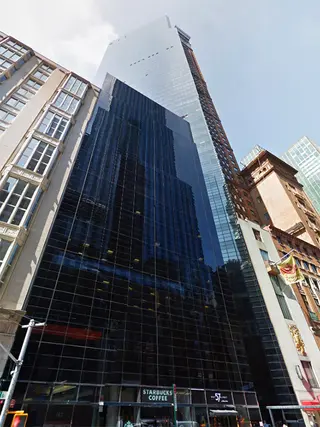
- Condo built in 1985
- 4 apartments currently for sale ($1.095M to $7.499M)
- Located in Midtown West
- 241 total apartments 241 total apartments
- 10 recent sales ($985.1K to $3.4M)
- Doorman
- Pets Allowed

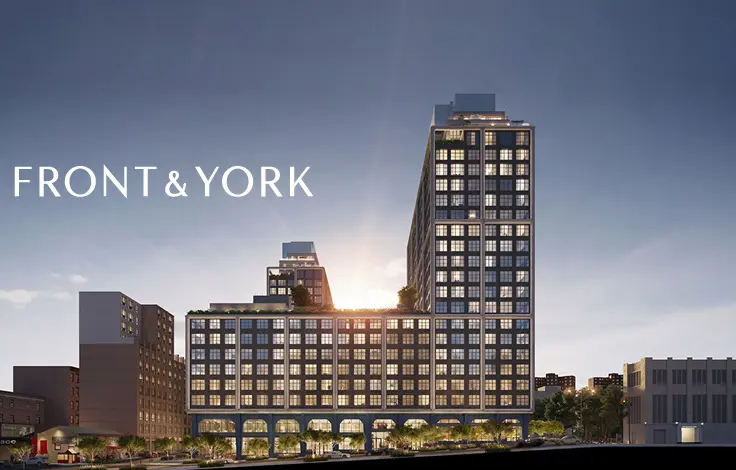
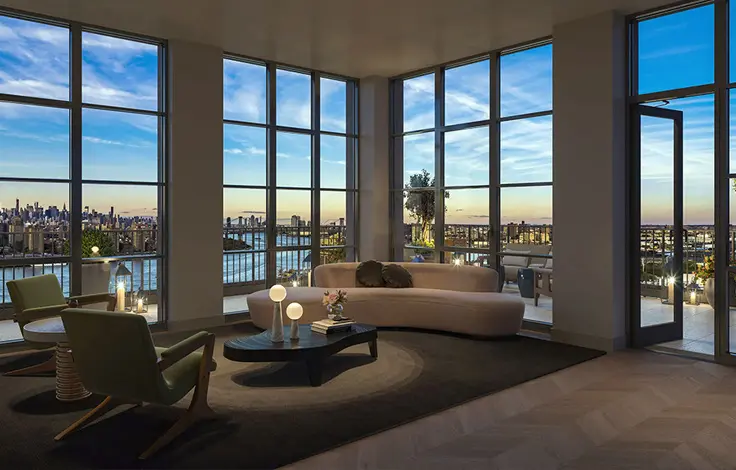

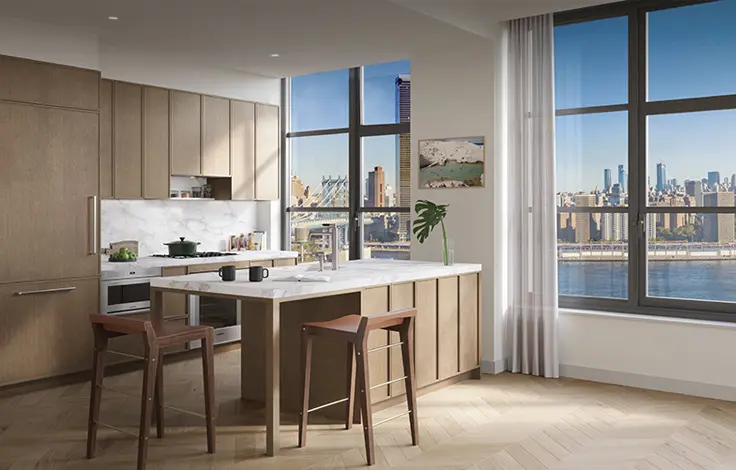
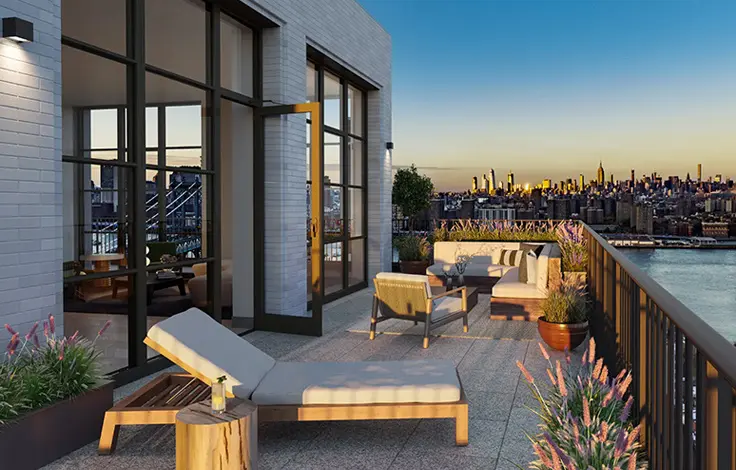
 6sqft delivers the latest on real estate, architecture, and design, straight from New York City.
6sqft delivers the latest on real estate, architecture, and design, straight from New York City.
